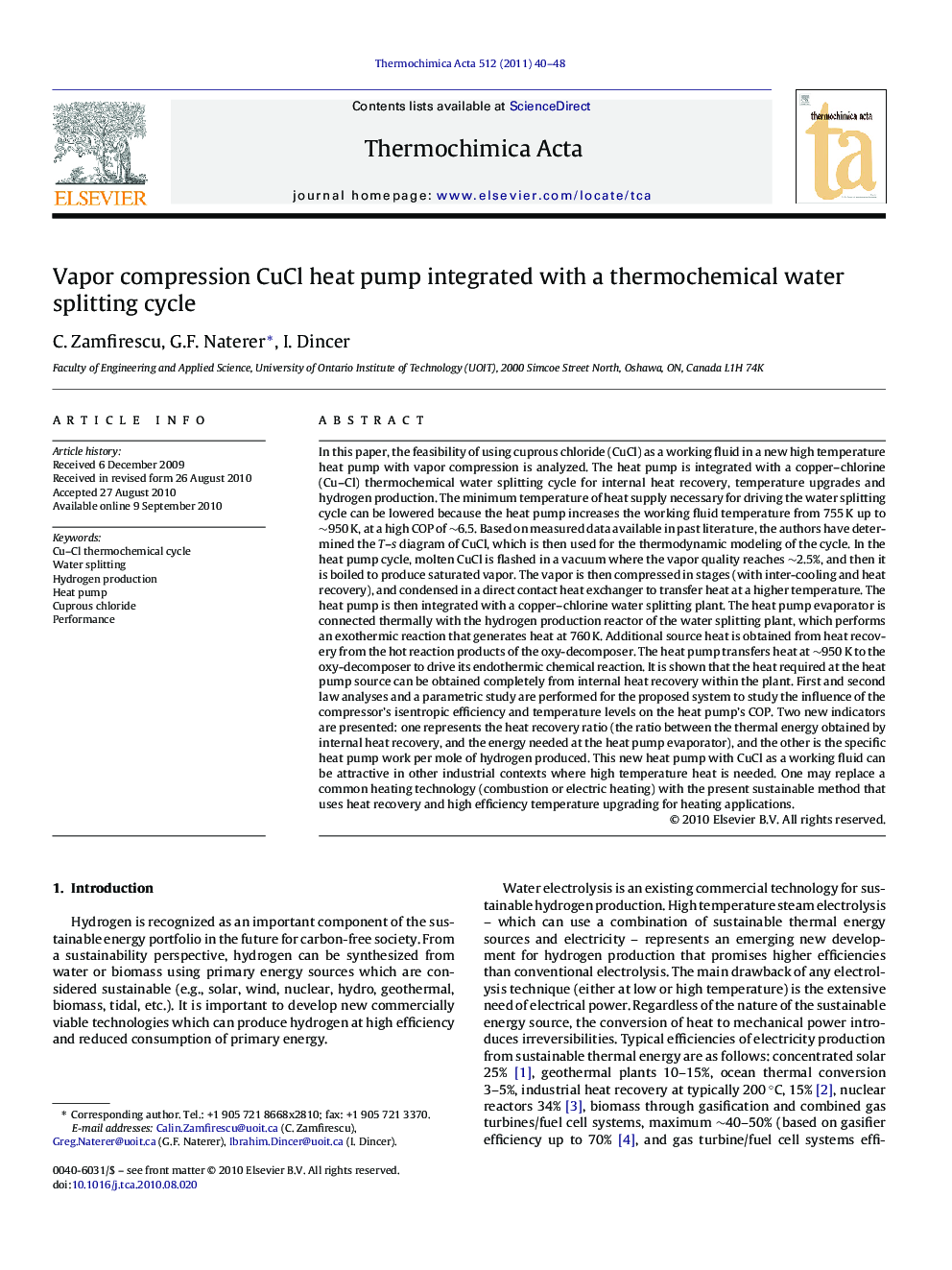| کد مقاله | کد نشریه | سال انتشار | مقاله انگلیسی | نسخه تمام متن |
|---|---|---|---|---|
| 674662 | 1459572 | 2011 | 9 صفحه PDF | دانلود رایگان |

In this paper, the feasibility of using cuprous chloride (CuCl) as a working fluid in a new high temperature heat pump with vapor compression is analyzed. The heat pump is integrated with a copper–chlorine (Cu–Cl) thermochemical water splitting cycle for internal heat recovery, temperature upgrades and hydrogen production. The minimum temperature of heat supply necessary for driving the water splitting cycle can be lowered because the heat pump increases the working fluid temperature from 755 K up to ∼950 K, at a high COP of ∼6.5. Based on measured data available in past literature, the authors have determined the T–s diagram of CuCl, which is then used for the thermodynamic modeling of the cycle. In the heat pump cycle, molten CuCl is flashed in a vacuum where the vapor quality reaches ∼2.5%, and then it is boiled to produce saturated vapor. The vapor is then compressed in stages (with inter-cooling and heat recovery), and condensed in a direct contact heat exchanger to transfer heat at a higher temperature. The heat pump is then integrated with a copper–chlorine water splitting plant. The heat pump evaporator is connected thermally with the hydrogen production reactor of the water splitting plant, which performs an exothermic reaction that generates heat at 760 K. Additional source heat is obtained from heat recovery from the hot reaction products of the oxy-decomposer. The heat pump transfers heat at ∼950 K to the oxy-decomposer to drive its endothermic chemical reaction. It is shown that the heat required at the heat pump source can be obtained completely from internal heat recovery within the plant. First and second law analyses and a parametric study are performed for the proposed system to study the influence of the compressor's isentropic efficiency and temperature levels on the heat pump's COP. Two new indicators are presented: one represents the heat recovery ratio (the ratio between the thermal energy obtained by internal heat recovery, and the energy needed at the heat pump evaporator), and the other is the specific heat pump work per mole of hydrogen produced. This new heat pump with CuCl as a working fluid can be attractive in other industrial contexts where high temperature heat is needed. One may replace a common heating technology (combustion or electric heating) with the present sustainable method that uses heat recovery and high efficiency temperature upgrading for heating applications.
Journal: Thermochimica Acta - Volume 512, Issues 1–2, 10 January 2011, Pages 40–48